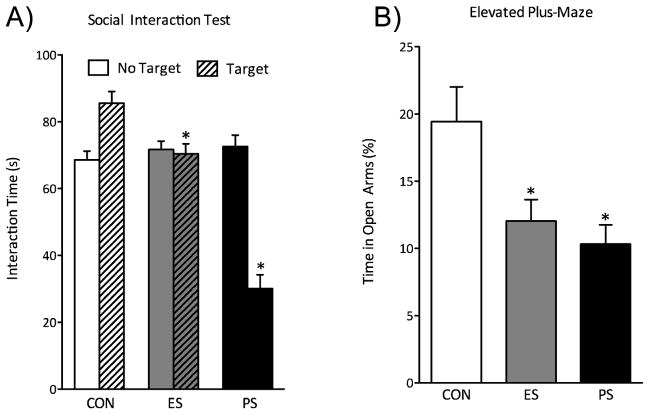Figure 2.
Emotional (ES) and physical (PS) stress alter mood and anxiety-related behavioral measures 24-hr after the last stress exposure. (A) ES and PS exposure reduced the time spent interacting with the CD-1 mouse when compared to control (CON) mice (n=38; p< 0.05). (B) A group of mice was exposed to the elevated maze test (EPM) 48 hours after the last stress session (n=10). ES- and PS-exposed mice showed reduced time spent in the open arms of the EPM when compared to CON (p<0.05). (C) To determine the long-lasting effects of prior ES and PS exposure on subsequent neuroendocrine stress responses, these mice were used 40 min after the FST exposure and serum corticosterone (CORT) was assessed (n=8). ES and PS exposed mice had significantly increased (CORT) levels when compared to CON mice (p<0.05, respectively). (Data from Warren et al., 2013, with permission)

